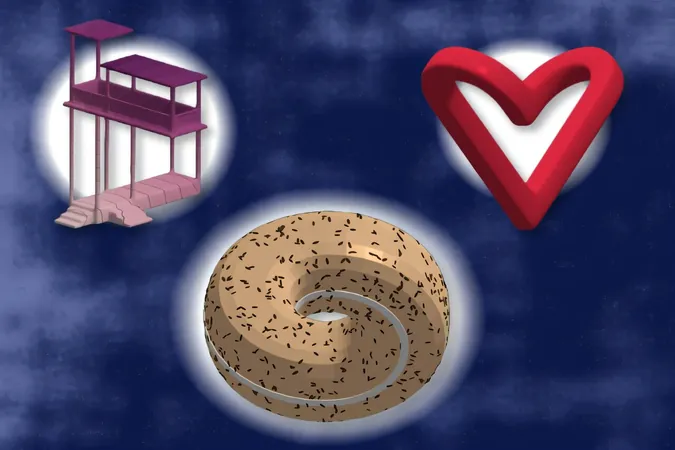
Unlocking the Impossible: MIT's 'Meschers' Tool Revolutionizes 3D Illusions
2025-08-05
Author: Sarah
Dive into the World of Optical Illusions!
Step into the mind-bending universe of M.C. Escher, where art defies logic through a mesmerizing mix of geometry and perspective. His iconic works feature "impossible objects" that challenge the very laws of physics, creating a visual experience that transforms based on your viewpoint. For instance, a staircase might lead you upwards or downwards, depending on how you tilt your head!
The Challenge of Replicating Impossible Geometry
While computer graphics experts have long attempted to recreate Escher-like illusions in 3D, the results often fall short. These graphics typically require manipulating real shapes at specific angles, which reveals their true essence when details like lighting change. This limitation poses a challenge for solving geometry problems on these structures.
Introducing Meschers: A Game-Changer in Visualization
MIT's Computer Science and Artificial Intelligence Laboratory (CSAIL) has unveiled a groundbreaking tool named "Meschers" that transforms the way we visualize impossible objects. This innovative tool turns images and 3D models into 2.5-dimensional representations, allowing users to craft Escher-esque designs like surreal windows, fantastical buildings, and playful donuts. What sets Meschers apart is its ability to preserve the optical illusion while enabling adjustments like lighting and surface smoothness.
A New Era for Artists and Researchers
Lead author Ana Dodik, a Ph.D. student at MIT, dreams of developing graphic tools that break away from the constraints of physical reality. "With Meschers, we've unlocked a new class of shapes for artists to explore," she reveals. This tool not only benefits artists but could also aid mathematicians in measuring distances on curved surfaces, known as geodesics, and simulating heat flow on these peculiar geometries.
Impossibility Made Possible: How Meschers Works
Many impossible objects seem plausible but fall apart when you try to piece them together in 3D. The beauty of Meschers lies in its ability to model these objects while maintaining their optical deceptions. For example, the Penrose Triangle, which looks convincing at first glance, reveals its contradictions upon closer inspection. Meschers cleverly utilizes local inconsistencies to assemble these visually striking forms without losing their impossible characteristics.
Endless Possibilities with Meschers
Beyond creating stunning visual illusions, Meschers can break down complex structures into simpler shapes for more accurate calculations. The team demonstrated its versatility by refining a tricky "impossibagel" shaded in a way that defies physics, then used the tool to simulate heat diffusion over the bizarre shape.
A Tool for the Imaginary and Future of Computer Graphics
Imagine being an ant journeying across an impossibagel, pondering how long your trek might take! Meschers allows scientists and artists alike to explore and analyze such extraordinary geometries as if they were working with real-world objects. Senior author Justin Solomon emphasizes, "Meschers shows that our creative capabilities aren’t bound by the rules of physical reality. Artists can now wrestle with shapes that exist only in imagination."
Looking Ahead: Future Enhancements for Meschers
Despite its impressive capabilities, Meschers is just beginning its journey. The team is focused on developing user-friendly interfaces and exploring collaborative opportunities with perception scientists to further expand the tool’s application in graphics.




 Brasil (PT)
Brasil (PT)
 Canada (EN)
Canada (EN)
 Chile (ES)
Chile (ES)
 Česko (CS)
Česko (CS)
 대한민국 (KO)
대한민국 (KO)
 España (ES)
España (ES)
 France (FR)
France (FR)
 Hong Kong (EN)
Hong Kong (EN)
 Italia (IT)
Italia (IT)
 日本 (JA)
日本 (JA)
 Magyarország (HU)
Magyarország (HU)
 Norge (NO)
Norge (NO)
 Polska (PL)
Polska (PL)
 Schweiz (DE)
Schweiz (DE)
 Singapore (EN)
Singapore (EN)
 Sverige (SV)
Sverige (SV)
 Suomi (FI)
Suomi (FI)
 Türkiye (TR)
Türkiye (TR)
 الإمارات العربية المتحدة (AR)
الإمارات العربية المتحدة (AR)